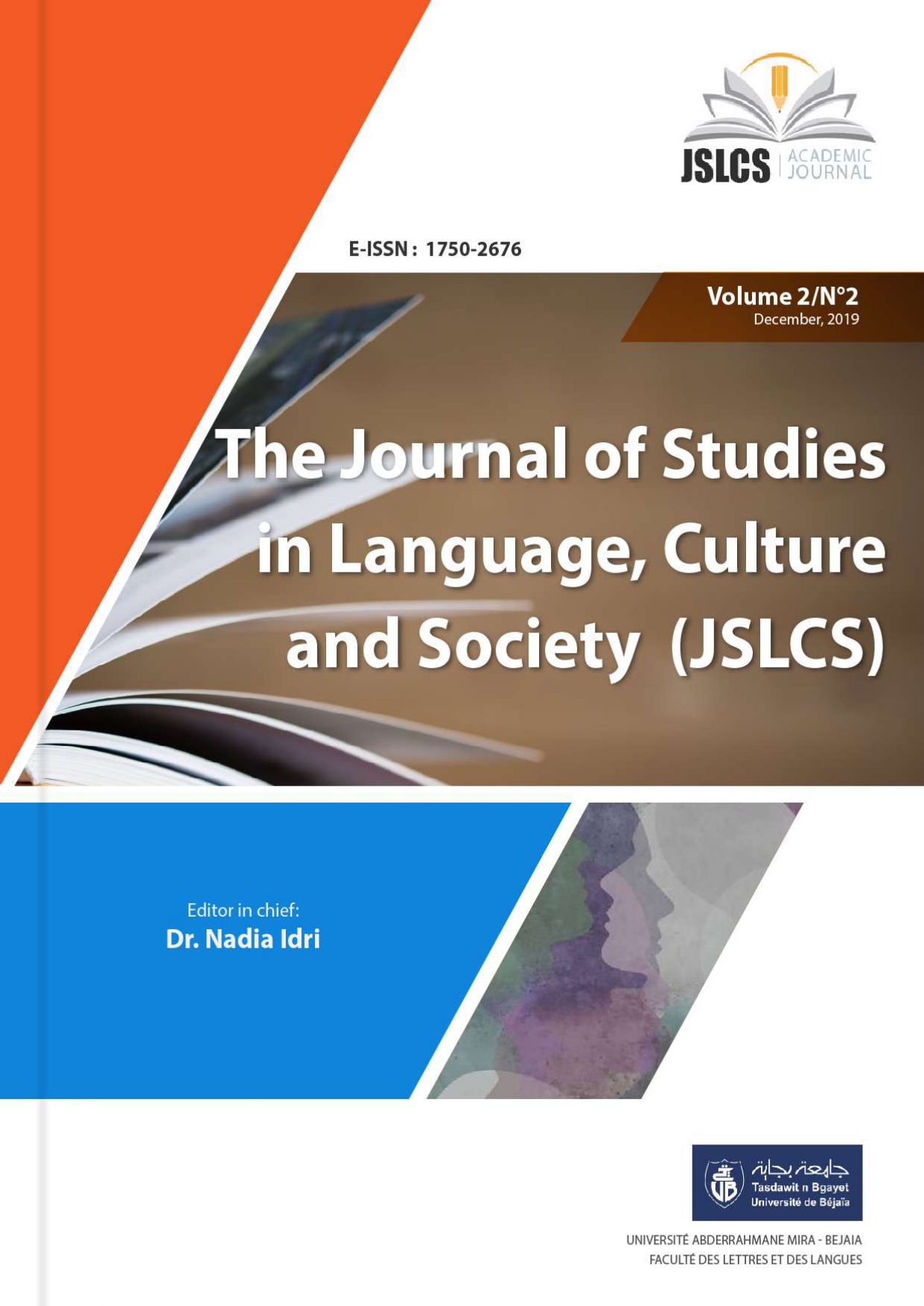The Role Of Teachers In Embedding Culture Within The New Learnt Language In The Translation Subject-matter: A Case Study Of Second Year Students Of English
Keywords:
Culture, discourse, language, learning, teachingAbstract
It has been known in the teaching profession that learners do not need the rules of language only; they also need to know how to put language in its appropriate social and cultural contexts. Since this is the focal point in „communicative language teaching‟, this study focuses on the importance of culture and discourse in teaching language taking into consideration the factors that make languages overlap and differ at the same time. This paper casts light on the role of teachers in embedding culture in language teaching It aims to help language learners interact with speakers of other languages on equal terms, without forgetting making them aware of their own identities and those of their interlocutors. So, it is hypothesised that: If students are taught languages carefully, they will be aware of the main role of cultural and intercultural dimensions. To test the validity of this hypothesis, a test, composed of two tasks, was given to eighty (80) second-year students of English to test their ability to understand and translate some idiomatic expressions. Results revealed that students succeeded in translating the first task, which is composed of a number of simple idiomatic expressions; however, they failed in filling the gaps with appropriate idiomatic expressions. This may refer to the fact that students are unable to relate between the English language and its culture. Thus, it is recommended for teachers to try to design a series of activities to enable learners discuss and draw conclusions by themselves. This helps them know about the target culture through their own experience as a result of what they have heard or read.
References
- Bennet, J.M., Bennet, J.M & Allen, W. (1999). Developing intercultural competence in the language classroom. In R.M. Paige, D.L. Lange, & Y. A. Yershorva (eds.), Culture as the core integrating culture into language curriculum (pp.13-46). Minneapolis: Carla University of Minnesota.
- Board of Studies, NSW. (2003). K-10 Language syllabus. Japanese. Board of Studies NSW.
- Byram, M. (1997). The Intercultural dimension in language learning for citizenship. In M. Byram, G. Zarate (eds.), The sociocultural and intercultural dimension of language learning and teaching. (pp.17-20), Strasbourg: Council of Europe Publishing.
- Byram, M. (1997). Teaching and assessing intercultural communicative competence. Clevedon, UK: Multilingual Matters.
- Byram, M., Gribkova, B., & Starkey, H. (2002). Developing the intercultural dimension in language teaching: a practical introduction for teachers. Strasbourg: DGIV.
- Corbett, J. (2003). An intercultural approach to English language teaching. Clevedon:Multilingual Matters.
- Deardorff, D. K. (2006), The identification and assessment of intercultural competence as a student outcome of internationalization at institutions of higher education in the United States, Journal of Studies in International Education 10:241- 266
- Dufva, H. (1994). Language awareness and cultural awareness for language learners. Hungarologische Beitrage 2. Probleme Des Spracherwerbs Hungarologia - Jyaskyla 1994.
- Jular, E. M. (2007). The development of intercultural awareness and changes of beliefs: the effects of studying abroad on learners of English as a second language.Treball/projecte de fi de màster de recerca. Departament de Traducció i Filologia, Universitat Pompeu Fabra.
- Hawkins, E. (1984). Awareness of language: An introduction. Cambridge: Cambridge University Press.
- Kohler, M., Harbon, L., Fishman,V. McLaughlin, Liddicoat, A. (2006). Quality teaching: views from the profession, BABEL 40 (3):23-38.
- Kramsch, C. (1993). Context and culture in language teaching. Oxford: Oxford University Press. Liddicoat, A.J. (2004). Intercultural language teaching principle for practice. New Zealand Language Teacher, 30:17-24.
- Lo Bianco, J., Liddicoat, A. & Crozet, C. (eds.). (1999). Striving for the third place: intercultural competence through language Education. Melbourne: Language Australia.
- Longo, D. (2008). An experience of inter-cultural education in an evolutionary class. Studi diGlottodidattica, 1, 112-119.
- Menard-Warwick, J. (2008). The cultural and intercultural identities of transnational English teachers: Two case studies from the Americas. TESOL Quarterly, 42(4), 617- 640.
- Pawles, A. (2000). Globalisation and the impact of teaching language in Australia. In Crozet, C. & Liddicoat, A. (Eds.). (2000). Teaching languages, leaching cultures. Melbourne: Language Australia: 19-26.
- Paige, R.M., Jorstad, H.L., Siaya, L., Klein, F., & Colby, J. (2003). Culture learning in language education: A review of the literature. In D.L. Lange & R.M. Paige (Eds.), Culture as the core: Perspectives on culture in second language learning (pp. 173–236). USA: Information Age Publishing.
- Scarino, A. (2008). Reconceptualizing learning programs for intellectual language learning, BABAL 43 (1): 7-38.
- Wierzbicka, A. (2006). Intercultural pragmatics and communication. In Encyclopedia
of language and linguistics. Retrieved 29/05/2011 from http://www.sciencedirect.com/science/article/pii/B0080448542003205>








